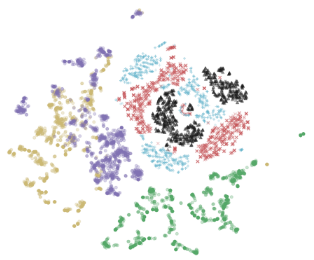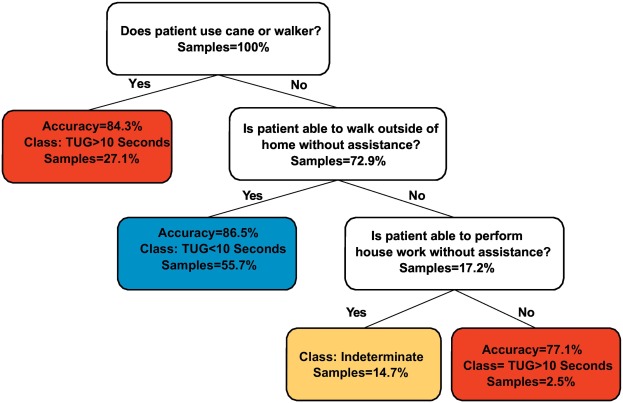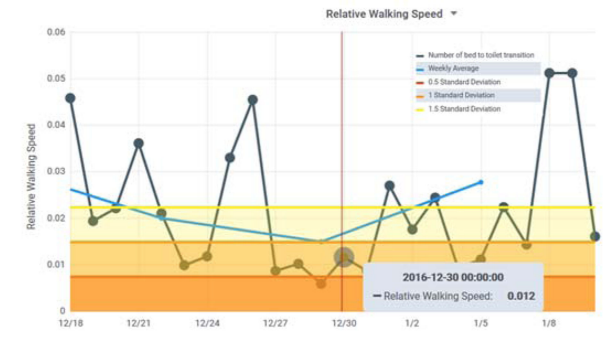|
I recently completed my PhD in Computer Science at Washington State University, where I worked with Diane J. Cook and Nghia Hoang at Center of Advanced Studies In Adaptive Systems and was supported by the National Institutes of Health. My research interests are diverse yet intertwined, encompassing interpretability, deep learning, health informatics, and data visualization. My passion lies in bridging the communication gap between complex machine learning models and humans. This involves not only building and critically analyzing tools but also understanding their innate characteristics in relation to human cognition. I am currently open to exploring new opportunities that align with my skill set and interests. Feel free to reach out to me for collaborations, discussions, or job opportunities. Email / Google Scholar / Twitter / Linkedin / GitHub |

|
|
|

|
Alireza Ghods , Nghia Hoang, Diane J. Cook Code: T2P Data summarization is the process of generating interpretable and representative subsets from a dataset. Existing time series summarization approaches often search for recurring subsequences using a set of manually devised similarity functions to summarize the data. However, such approaches are fraught with limitations stemming from an exhaustive search coupled with a heuristic definition of series similarity. Such approaches affect the diversity and comprehensiveness of the generated data summaries. To mitigate these limitations, we introduce an approach to time series summarization, called Time-to-Pattern (T2P), which aims to find a set of diverse patterns that together encode the most salient information, following the notion of minimum description length. T2P is implemented as a deep generative model that learns informative embeddings of the discrete time series on a latent space specifically designed to be interpretable. Our synthetic and real-world experiments reveal that T2P discovers informative patterns, even in noisy and complex settings. Furthermore, our results also showcase the improved performance of T2P over previous work in pattern diversity and processing scalability, which conclusively demonstrate the algorithm's effectiveness for time series summarization. |

|
Carla de Lira, Rachel Wong, Olufunso Oje, Gabriel Nketah, Olusola Adesope, Alireza Ghods International Journal of Computer Science Education in Schools, 2022 This paper presents an analysis of short project-based programming camps as a tool for increasing programming knowledge and motivation among K-12 students, particularly in rural communities with limited computing resources. Through an implemented week-long curriculum involving game development in Python, it found that students successfully developed basic abstraction and algorithmic thinking skills, but lacked in areas like code analysis and debugging. However, the motivation to pursue computing careers remained unchanged before and after the camp, likely due to pre-existing interest among attendees. |

|
Alireza Ghods , Diane J. Cook IEEE Computational Intelligence Magazine, 2022 Code: PIPNet Time series classifiers are not only challenging to design, but they are also notoriously difficult to deploy for critical applications because end users may not trust black-box models. Despite new efforts, explanations generated by other interpretable time series models are complicated for non-engineers to understand. To address this challenge, we introduce PIP, a novel deep learning architecture that jointly learns classification models and meaningful visual class prototypes. PIP allows users to train the model on their choice of class illustrations. Thus, PIP can create a user-friendly explanation by leaning on end-users definitions. |

|
Alireza Ghods , Armin Shahrokni, Hassan Ghasemzadeh, Diane J. Cook JMIR cancer, 2021 Our study demonstrates the feasibility of using inexpensive, consumer-based activity trackers for the remote monitoring of performance status in the gastrointestinal cancer population. The daily step counts yielded the highest correlation with the patients' ECOG-PS scores after chemotherapy (P<.001). The patients with higher ECOG-PS scores experienced a higher fluctuation in their step counts. The patients who walked more prechemotherapy (mean 6071 steps per day) and postchemotherapy (mean 5930 steps per day) had a lower MSAS-SF score (lower burden of symptoms) compared to patients who walked less prechemotherapy (mean 5205 steps per day) and postchemotherapy (mean 4437 steps per day). |

|
Alireza Ghods , Proceedings of the AAAI Conference on Artificial Intelligence, 2021 The Twenty-Sixth AAAI/SIGAI Doctoral Consortium |

|
Alireza Ghods , Diane J. Cook Data Mining and Knowledge Discovery, 2021 Deep neural networks (DNNs) have introduced novel and useful tools to the machine learning community. Other types of classifiers can potentially make use of these tools as well to improve their performance and generality. |

|
Alireza Ghods , Diane J. Cook KDD Workshop on Applied Data Science for Healthcare, 2019 Code: PIPNet We purpose a new method for learning activities of daily living (ADLs). A seq2seq model is utilized for extracting features from raw sensor data. Then, a random forest employed the learned features for building a predictive model. |

|
Keyvan Sasani, Helen N. Catanese, Alireza Ghods , Seyed Ali Rokni, Hassan Ghasemzadeh, Robert J. Downey, Armin Shahrokni Journal of geriatric oncology , 10.1, 2019 We employ a decision tree model to predict the result of the Timed Up and Go (TUG) tests and its association with survival, using cancer patient-generated responses. |

|
Alireza Ghods, Kathleen Caffrey, Beiyu Lin, Kylie Fraga, Roschelle Fritz, Maureen Schmitter-Edgecombe, Diane J. Cook IEEE journal of biomedical and health informatics, 23.4, 2018 We design a visual interface, that provides clinicians with patient behavior patterns, derived from smart home data. |
|
|
|
|
Design and source code from Jon Barron's website.